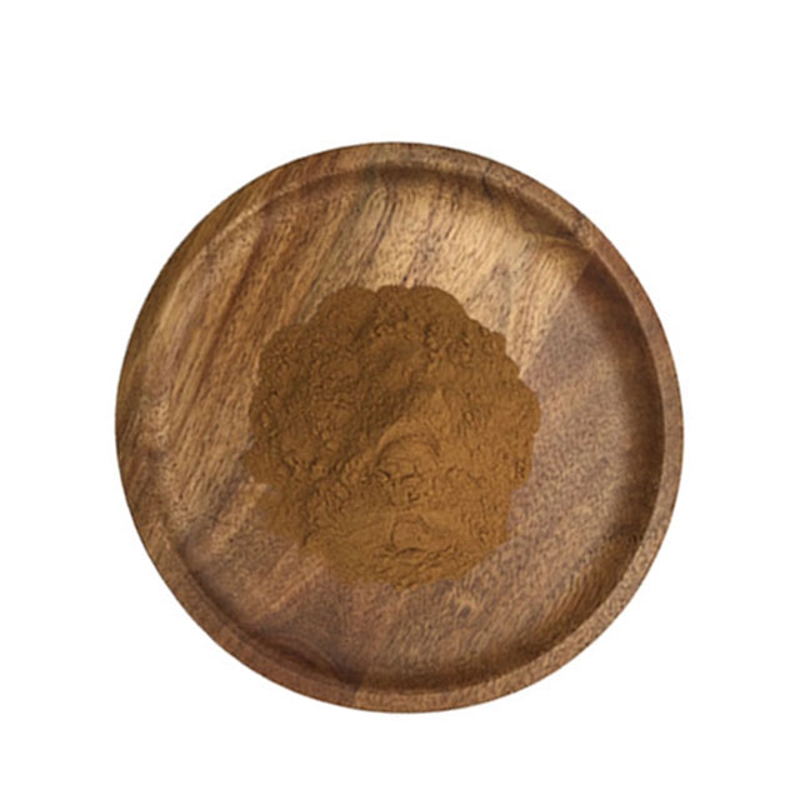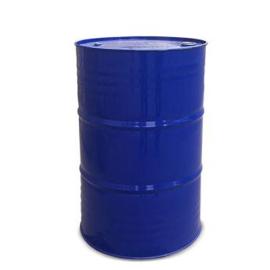-
Categories
-
Pharmaceutical Intermediates
-
Active Pharmaceutical Ingredients
-
Food Additives
- Industrial Coatings
- Agrochemicals
- Dyes and Pigments
- Surfactant
- Flavors and Fragrances
- Chemical Reagents
- Catalyst and Auxiliary
- Natural Products
- Inorganic Chemistry
-
Organic Chemistry
-
Biochemical Engineering
- Analytical Chemistry
- Cosmetic Ingredient
-
Pharmaceutical Intermediates
Promotion
ECHEMI Mall
Wholesale
Weekly Price
Exhibition
News
-
Trade Service
Introduction Liver cirrhosis is a progressive disease that can lead to portal hypertension
.
Among the many clinical manifestations of cirrhosis and portal hypertension, gastroesophageal varices (GEV) rupture and bleeding are the most urgent and have the highest fatality rate
.
At present, the prevention and treatment of portal hypertension-related complications mainly include drug therapy, endoscopic surgery, and transjugular intrahepatic portosystemic shunt (TIPS)
.
TIPS establishes a shunt in the liver parenchyma between the hepatic vein and the portal vein to significantly reduce the portal vein resistance structurally in a minimally invasive manner.
It is one of the key measures to reduce portal pressure in patients with liver cirrhosis
.
This article mainly summarizes the application of TIPS in cirrhosis and portal hypertension hemorrhage
.
When to use TIPS to treat portal hypertension-related bleeding? The timing of using TIPS to treat portal hypertension-related bleeding is shown in Figure 1
.
Figure 1 Timing of using TIPS to treat portal hypertension-related bleeding Note: AVB, acute varicose bleeding; NSBB, non-selective β-receptor blocker; PHG, portal hypertensive gastropathy; EcV, ectopic varices preemptive TIPS Scope of application Preemptive TIPS refers to preventive TIPS in high-risk patients with uncontrolled bleeding (within 5 days) and bleeding-related death risks
.
Advanced TIPS should be used as the standard treatment for high-risk AVB patients.
High-risk AVB patients are defined as Child-Pugh score C (10-13 points) or Child-Pugh score B and endoscopically confirmed active bleeding
.
The scope of application of salvage TIPS Vasoactive drugs, prophylactic antibiotics and restricted blood transfusions are the cornerstones of AVB initial drug therapy
.
Although 10%-20% of patients have applied the above treatments, varicose vein bleeding has not been controlled or reappeared within a short period of time (5 days)
.
At this time, in most cases, especially for patients with more severe bleeding, remedial TIPS is required
.
Esophageal stents should be considered as a bridging treatment option before TIPS
.
Although balloon tamponade (BT) can also be used as a bridging treatment option for salvage TIPS, BT often causes serious complications
.
Esophageal stents have been shown to be at least as effective as BT and are safer than BT in the treatment of AVB
.
In addition, the stent can be left in situ for a longer period of time (usually up to 7 days), allowing more time to maintain the patient's condition (control possible sepsis or aspiration pneumonia) before salvage TIPS
.
The scope of application of non-urgent TIPS for rebleeding after secondary prevention: NSBB combined with endoscopic ligation (EBL) is highly effective in the secondary prevention of rebleeding.
Based on existing data, TIPS is currently not recommended as a secondary prevention First-line treatment
.
However, in patients with rebleeding after adequate secondary prevention, TIPS should be considered
.
PHG: In patients with portal hypertension, there are special lesions of the gastric mucosa under the microscope, accompanied by dilation of the mucosa and submucosal blood vessels, but there is no obvious inflammation in histology, this kind of lesion is called PHG
.
The initial treatment of acute PHG bleeding should be vasoactive drugs, followed by NSBB for secondary prevention
.
TIPS should be considered for patients who experience re-bleeding or continue bleeding after receiving NSBB treatment, as well as patients who still develop persistent anemia after receiving iron supplements
.
EcV: EcV is the formation of hilar-body collateral circulation located outside the gastroesophagus.
Once rupture and bleeding occurs, the consequences are more serious than GEV, and the mortality rate is higher
.
For EcV that is ineffective in local treatment, TIPS may be an effective treatment
.
References: [1] Baiges A, Magaz M, Turon F, et al.
Treatment of Acute Variceal Bleeding in 2021—When to Use Transjugular Intrahepatic Portosystemic Shunts[J]? Clin Liver Dis.
2021 May;25(2):345 -356.
[2] Expert consensus on the diagnosis and treatment of esophageal and gastric varices bleeding in portal hypertension of liver cirrhosis (2019 edition)[J].
Chinese Journal of Surgery, 2019(12):885-892.
[3] Chinese Portal Hypertension Clinical practice guidelines for jugular intrahepatic portosystemic shunt[J].
Chinese Journal of Hepatology, 2019(08):582-593.
[4] Ye Qing, Han Tao.
Imaging diagnosis and equipment for portal hypertension with ectopic varicose veins Treatment[J].
Biomedical Engineering and Clinics, 2021,25(02):251-254.
[5] Zhang Shuhui, Wu Yang.
Progress in the treatment of portal hypertensive gastropathy[J].
Journal of Clinical Hepatobiliary Diseases, 2010,26 (01):106-107+109.
.
Among the many clinical manifestations of cirrhosis and portal hypertension, gastroesophageal varices (GEV) rupture and bleeding are the most urgent and have the highest fatality rate
.
At present, the prevention and treatment of portal hypertension-related complications mainly include drug therapy, endoscopic surgery, and transjugular intrahepatic portosystemic shunt (TIPS)
.
TIPS establishes a shunt in the liver parenchyma between the hepatic vein and the portal vein to significantly reduce the portal vein resistance structurally in a minimally invasive manner.
It is one of the key measures to reduce portal pressure in patients with liver cirrhosis
.
This article mainly summarizes the application of TIPS in cirrhosis and portal hypertension hemorrhage
.
When to use TIPS to treat portal hypertension-related bleeding? The timing of using TIPS to treat portal hypertension-related bleeding is shown in Figure 1
.
Figure 1 Timing of using TIPS to treat portal hypertension-related bleeding Note: AVB, acute varicose bleeding; NSBB, non-selective β-receptor blocker; PHG, portal hypertensive gastropathy; EcV, ectopic varices preemptive TIPS Scope of application Preemptive TIPS refers to preventive TIPS in high-risk patients with uncontrolled bleeding (within 5 days) and bleeding-related death risks
.
Advanced TIPS should be used as the standard treatment for high-risk AVB patients.
High-risk AVB patients are defined as Child-Pugh score C (10-13 points) or Child-Pugh score B and endoscopically confirmed active bleeding
.
The scope of application of salvage TIPS Vasoactive drugs, prophylactic antibiotics and restricted blood transfusions are the cornerstones of AVB initial drug therapy
.
Although 10%-20% of patients have applied the above treatments, varicose vein bleeding has not been controlled or reappeared within a short period of time (5 days)
.
At this time, in most cases, especially for patients with more severe bleeding, remedial TIPS is required
.
Esophageal stents should be considered as a bridging treatment option before TIPS
.
Although balloon tamponade (BT) can also be used as a bridging treatment option for salvage TIPS, BT often causes serious complications
.
Esophageal stents have been shown to be at least as effective as BT and are safer than BT in the treatment of AVB
.
In addition, the stent can be left in situ for a longer period of time (usually up to 7 days), allowing more time to maintain the patient's condition (control possible sepsis or aspiration pneumonia) before salvage TIPS
.
The scope of application of non-urgent TIPS for rebleeding after secondary prevention: NSBB combined with endoscopic ligation (EBL) is highly effective in the secondary prevention of rebleeding.
Based on existing data, TIPS is currently not recommended as a secondary prevention First-line treatment
.
However, in patients with rebleeding after adequate secondary prevention, TIPS should be considered
.
PHG: In patients with portal hypertension, there are special lesions of the gastric mucosa under the microscope, accompanied by dilation of the mucosa and submucosal blood vessels, but there is no obvious inflammation in histology, this kind of lesion is called PHG
.
The initial treatment of acute PHG bleeding should be vasoactive drugs, followed by NSBB for secondary prevention
.
TIPS should be considered for patients who experience re-bleeding or continue bleeding after receiving NSBB treatment, as well as patients who still develop persistent anemia after receiving iron supplements
.
EcV: EcV is the formation of hilar-body collateral circulation located outside the gastroesophagus.
Once rupture and bleeding occurs, the consequences are more serious than GEV, and the mortality rate is higher
.
For EcV that is ineffective in local treatment, TIPS may be an effective treatment
.
References: [1] Baiges A, Magaz M, Turon F, et al.
Treatment of Acute Variceal Bleeding in 2021—When to Use Transjugular Intrahepatic Portosystemic Shunts[J]? Clin Liver Dis.
2021 May;25(2):345 -356.
[2] Expert consensus on the diagnosis and treatment of esophageal and gastric varices bleeding in portal hypertension of liver cirrhosis (2019 edition)[J].
Chinese Journal of Surgery, 2019(12):885-892.
[3] Chinese Portal Hypertension Clinical practice guidelines for jugular intrahepatic portosystemic shunt[J].
Chinese Journal of Hepatology, 2019(08):582-593.
[4] Ye Qing, Han Tao.
Imaging diagnosis and equipment for portal hypertension with ectopic varicose veins Treatment[J].
Biomedical Engineering and Clinics, 2021,25(02):251-254.
[5] Zhang Shuhui, Wu Yang.
Progress in the treatment of portal hypertensive gastropathy[J].
Journal of Clinical Hepatobiliary Diseases, 2010,26 (01):106-107+109.







